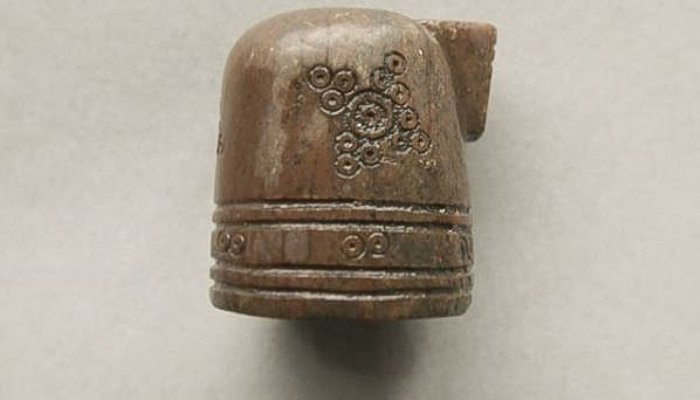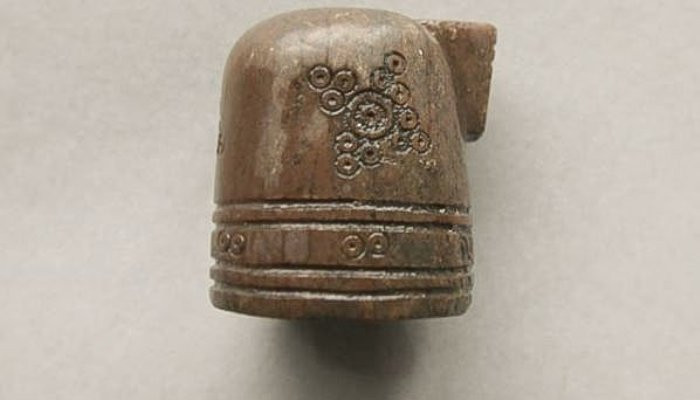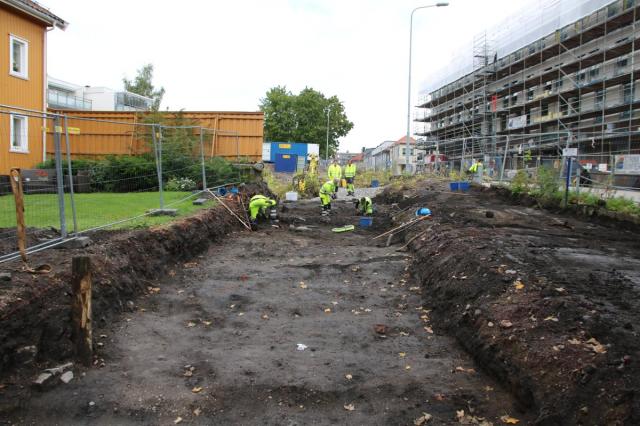Rare Arabic-inspired chess piece found in Tønsberg, Norway
 5017 Wednesday, 31 January, 2018, 00:05 Archaeologists from the Norwegian Institute of Cultural Heritage Research (NIKU) found the small medieval chess piece before Christmas during an excavation in Anders Madsens gate in Tønsberg. Tønsberg is Norway’s oldest city and excavations there are followed closely by historians and archaeologists. Arabic inspired chess piece – The design of the piece has an abstract shape, and is designed according to Islamic tradition, where no human figures are to be depicted, says project manager for the excavation in NIKU Lars HaugestenChess piece made of antler The piece is richly decorated with circles on the bottom, several dotted circles on the sides and at the top. The protruding snout on the top has two dotted circles. – No previous archaeological finds from Tønsberg have such details, which emphasizes that this chess piece is a unique object,” says Haugesten. Chess introduced to Norway in the late Viking age – The oldest find in the Nordic region is from Lund, Sweden, dating back to the last half of the 12th century. That piece is similar to the find from Tønsberg, says Haugesten.The chess piece from Tønsberg is a knight – In Norway, some chess pieces from the Middle Ages have been found, but few similar knights. For example, in Bergen, more than 1,000 gaming pieces have been found. Of these, there are some chess pieces but only 6 abstract knights, says Haugesten Their shape is similar to the piece from Tønsberg, but the size of the pieces varies. The decor on the pieces is not the same as that from Tønsberg, yet the pieces from Bergen both have dotted circles and ordinary circles.d chess piece. Synes du denne saken er like spennende som oss? Del denne saken Tønsberg is Norway’s oldest city and excavations there are followed closely by historians and archaeologists. Arabic inspired chess piece – The design of the piece has an abstract shape, and is designed according to Islamic tradition, where no human figures are to be depicted, says project manager for the excavation in NIKU Lars Haugesten This story and photos, with the appropriate credits, are free to use for the press. Sjakkbrikke_Toensberg1_1 The piece is richly decorated with circles on the bottom, several dotted circles on the sides and at the top. The protruding snout on the top has two dotted circles. – No previous archaeological finds from Tønsberg have such details, which emphasizes that this chess piece is a unique object,” says Haugesten. Chess introduced to Norway in the late Viking age – The oldest find in the Nordic region is from Lund, Sweden, dating back to the last half of the 12th century. That piece is similar to the find from Tønsberg, says Haugesten. Codex_Buranus-92-scacchi – In Norway, some chess pieces from the Middle Ages have been found, but few similar knights. For example, in Bergen, more than 1,000 gaming pieces have been found. Of these, there are some chess pieces but only 6 abstract knights, says Haugesten Their shape is similar to the piece from Tønsberg, but the size of the pieces varies. The decor on the pieces is not the same as that from Tønsberg, yet the pieces from Bergen both have dotted circles and ordinary circles.
– The area is in the outskirts of medieval Tønsberg, dating from the 12th to the 15th century. The area is located near Slottsfjell castle, The Royal Estate and the former St. Laurence Church. During the excavation, several houses and streets were discovered, and in addition the chess piece the archaeologists found ceramics, metal, combs, antlers and a whole range of artefacts that can be linked to the Middle Ages. And in the middle of it all – this rare chess piece.   |

Japan Unveils Human Washing Machine, Now You Can Get Washed Like Laundry (video)
413501.12.2025, 20:45
Chinese humanoid robot sets Guinness World Record with 106-km inter-city walk (video)
547624.11.2025, 16:30
Musk։ Optimus will be able to eliminate poverty and provide everyone with a universal high income (video)
680923.11.2025, 12:45
AGMI researchers expose the hidden role of female perpetrators in the Armenian Genocide (photo)
355213.11.2025, 21:15
LVM3-M5 mission successfully launches CMS-03 satellite (video)
649002.11.2025, 21:17
Google разработала квантовый алгоритм, работающий в 13 тыс. раз быстрее алгоритма суперкомпьютеров
627822.10.2025, 23:44
Apple introduces the powerful new iPad Pro with the M5 chip
703615.10.2025, 23:34
Apple debuts iPhone 17
713909.09.2025, 23:08
